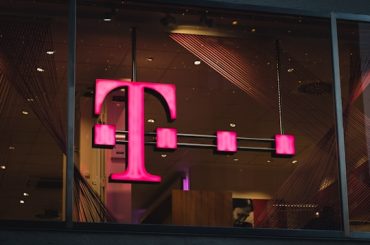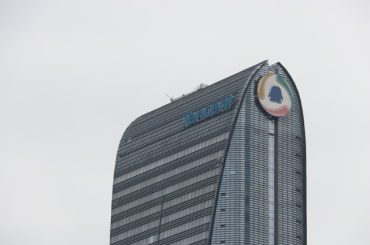Before we dive deep into the SWOT analysis, let’s get the business overview of H&M. H&M, or Hennes & Mauritz AB, is a Swedish multinational clothing-retail company known for its fast-fashion clothing for men, women, teenagers, and children. Founded in 1947 by Erling Persson, the company has become one of the largest fashion retailers globally, with a presence in over 74 countries and a vast network of physical stores and e-commerce platforms.
H&M offers affordable, trendy, fashionable clothing and accessories catering to various styles and preferences. The company operates under multiple brands, including H&M, COS, Monki, Weekday, & Other Stories, H&M Home, ARKET, and Afound. Each brand targets different customer segments and price points, allowing the company to appeal to a wide range of consumers.
The company’s business model is centered around fast fashion, which involves quickly moving new styles from the catwalk to retail stores. By focusing on efficient supply chain management, design, and production processes, H&M can offer new items at competitive prices. The brand has also invested in developing a strong online presence, with e-commerce platforms available in several markets, allowing them to reach customers worldwide.
As the company acknowledges the fashion industry’s environmental impact, sustainability has become an increasingly important aspect of H&M’s business strategy. The brand has set goals to become climate positive by 2040 and to use only sustainable or recycled materials by 2030. H&M has implemented various initiatives to achieve these goals, such as garment recycling programs, investing in sustainable materials, and partnering with other organizations to promote sustainability.
How Is H&M Bringing the Circular Economy to the Apparel Industry?
However, H&M has faced criticism for its role in promoting fast-fashion culture, which has led to increased waste and negative environmental impacts. Concerns over labor practices in the company’s supply chain have also emerged in recent years. In response, H&M has made efforts to improve transparency and conditions within its supply chain and to demonstrate commitment to ethical and sustainable practices.
Financial Performance: For the 2022 financial year, covering the period 1 December 2021 – 30 November 2022, H&M’s net sales increased by 12 percent to SEK 223,571 Mn ($21.4 billion), compared with 2021, at a gross margin of 50.7%.
Here’s a SWOT analysis for H&M:
A SWOT analysis is a strategic planning tool used to evaluate the Strengths, Weaknesses, Opportunities, and Threats of a business, project, or individual. It involves identifying the internal and external factors that can affect a venture’s success or failure and analyzing them to develop a strategic plan. In this article, we do a SWOT Analysis of H&M.
SWOT Analysis: Meaning, Importance, and Examples
Strengths
- Global Presence: H&M has a vast network of physical stores and a strong online presence, enabling the brand to reach customers in over 74 countries. This broad reach allows the company to tap into diverse markets and consumer preferences.
- Brand Portfolio: H&M operates multiple brands, including COS, Monki, Weekday, & Other Stories, H&M Home, ARKET, and Afound, which cater to different customer segments and price points. This diversification helps the company appeal to a wide range of consumers.
- Fast-fashion Model: H&M’s ability to quickly adapt to new trends and bring them to market has made it a popular choice for consumers seeking affordable and trendy clothing. The company’s efficient supply chain management, design, and production processes enable it to offer new items at competitive prices.
- Affordability: H&M is known for offering fashionable clothing and accessories at affordable prices, making it an attractive option for budget-conscious consumers.
- Digital Strategy: H&M has invested in developing a robust online presence, with e-commerce platforms available in several markets. This has allowed the company to reach customers who prefer online shopping and to adapt to changing consumer behavior.
- Sustainability Initiatives: H&M has made significant efforts to address the fashion industry’s environmental impact by setting sustainability goals, implementing garment recycling programs, and investing in sustainable materials. These initiatives contribute to a more sustainable future but also help improve the company’s reputation among environmentally-conscious consumers.
- Collaborations and Partnerships: H&M has a history of successful collaborations with high-profile designers and celebrities, such as Alexander Wang, Stella McCartney, and Balmain. These collaborations generate buzz and attract new customers while showcasing H&M’s ability to offer high-fashion designs at accessible prices.
- Marketing and Advertising: H&M is known for its creative marketing campaigns, which leverage social media, influencers, and traditional advertising to engage with consumers and build brand awareness.
Weaknesses
- Fast-fashion Controversy: H&M’s fast-fashion model has been criticized for promoting overconsumption, contributing to environmental degradation, and generating waste. This negative perception can harm the company’s reputation among increasingly environmentally-conscious consumers.
- Supply Chain Issues: H&M has faced criticism for labor practices in its supply chain, including low wages and poor working conditions in factories producing its garments. This has raised ethical concerns and damaged the brand’s image.
- Dependence on Physical Stores: While H&M has expanded its online presence, the company still relies heavily on its brick-and-mortar stores for revenue. This dependence makes the brand vulnerable to shifts in consumer shopping habits and economic downturns that could affect in-store sales.
- Competitive Market: H&M faces intense competition from other fast-fashion retailers, such as Zara, Primark, and Forever 21, as well as from online platforms like ASOS and Amazon. This competition pressures the company to innovate continually and maintain a competitive edge.
- Limited Product Differentiation: Due to the nature of fast fashion, H&M’s products can sometimes lack uniqueness and differentiation, making it harder for the brand to stand out in a crowded market.
- Seasonal Inventory Management: Managing inventory for a fast-fashion retailer can be challenging due to the rapid turnover of styles and the need to respond quickly to changing trends. Excess inventory can lead to heavy discounting and reduced profitability.
- Quality Concerns: To maintain low prices, H&M’s products may sometimes be perceived as lower quality compared to competitors. This can impact customer satisfaction and brand loyalty.
- Slow Adaptation to E-commerce: H & M has been slower than its competitors in fully embracing e-commerce and digital transformation. This lag has allowed other brands to gain a competitive edge in online retail.
Opportunities
- Expanding E-commerce: H&M can continue to invest in and expand its e-commerce capabilities to meet the growing demand for online shopping better. Improving its digital presence and user experience can help the company reach a wider audience and increase sales.
- Omni-channel Strategy: H&M can create a seamless customer shopping experience by integrating online and offline channels. This can include features like click-and-collect, in-store returns for online purchases, and personalized marketing based on customer preferences.
- Sustainable and Ethical Fashion: H&M can capitalize on the growing consumer interest in sustainable and ethically-produced clothing by further investing in sustainable materials, production methods, and supply chain transparency. This can help improve the brand’s image and attract environmentally-conscious consumers.
- Expansion into Emerging Markets: H&M can explore opportunities to enter and grow in emerging markets, particularly in regions with a growing middle class and increasing disposable income. This can help diversify the company’s revenue sources and tap into new customer segments.
- Product Innovation and Diversification: H&M can continue to expand its product offerings to cater to various consumer needs and preferences. This can include expanding into new product categories, such as activewear, plus-size clothing, or sustainable fashion lines.
- Collaborations and Partnerships: H&M can continue to pursue high-profile collaborations with designers, celebrities, and influencers to generate buzz and attract new customers. These collaborations can also help the brand maintain its fashion-forward image.
- Technology Integration: H&M can explore opportunities to incorporate technology into its stores, supply chain management, and customer experience. This can include features like virtual fitting rooms, AI-powered recommendations, and using data analytics to optimize inventory management.
- Enhancing Customer Experience: By improving customer service and the overall in-store and online shopping experience, H&M can build brand loyalty and increase customer retention.
Threats
- Intense Competition: The fashion retail industry is highly competitive, with numerous global and local players vying for market share. H&M faces direct competition from other fast-fashion retailers like Zara, Primark, and Forever 21, as well as from e-commerce giants like Amazon and ASOS. The competition can lead to pricing pressures, lower margins, and the need for constant innovation.
- Changing Consumer Preferences: Consumers may increasingly opt for sustainable and ethically-produced clothing as they become more environmentally and socially conscious. This could negatively impact the demand for fast-fashion products, forcing H&M to adapt its business model and offerings.
- Economic Downturns: Economic recessions and downturns can lead to decreased consumer spending, affecting the overall retail industry, including H&M. These conditions can lead to reduced sales, store closures, and increased inventory pressures.
- Supply Chain Disruptions: H&M relies on a global supply chain, which makes it vulnerable to disruptions caused by geopolitical tensions, trade disputes, natural disasters, or pandemics. Such disturbances can lead to increased production costs, delays, and potential damage to the brand’s reputation.
- Regulatory Changes: H&M operates in multiple countries, subjecting it to various labor practices, environmental standards, and taxation regulations and laws. Changes in regulations or increased scrutiny could result in higher compliance costs or penalties for the company.
- Counterfeit Products: The fashion industry is prone to counterfeiting, which can negatively impact H&M’s brand image and sales. The proliferation of counterfeit products may lead to customer confusion, lower sales, and potential legal disputes.
- Technological Disruption: The rise of new technologies, such as AI, virtual reality, and data analytics, is transforming the retail industry. H&M must continue to adapt and invest in these technologies to maintain a competitive edge and meet evolving customer expectations.









